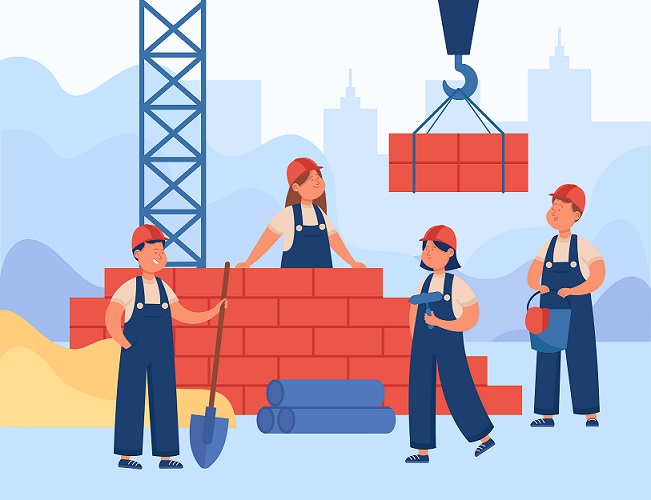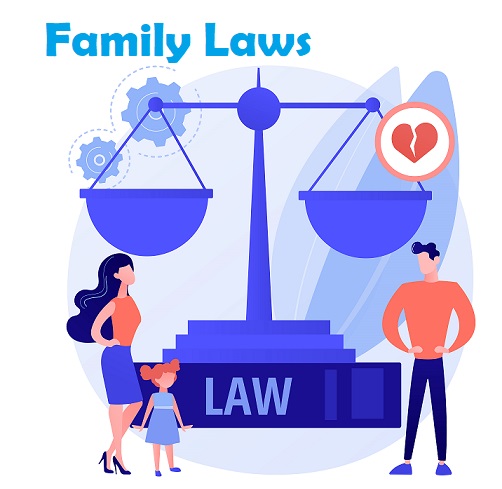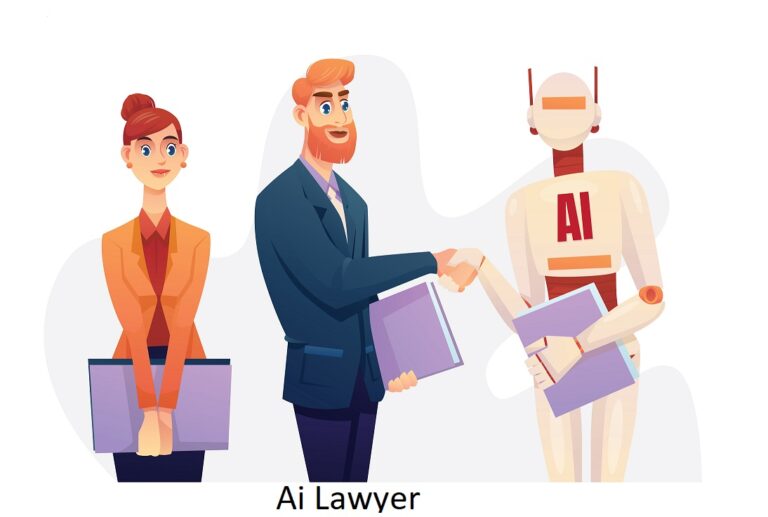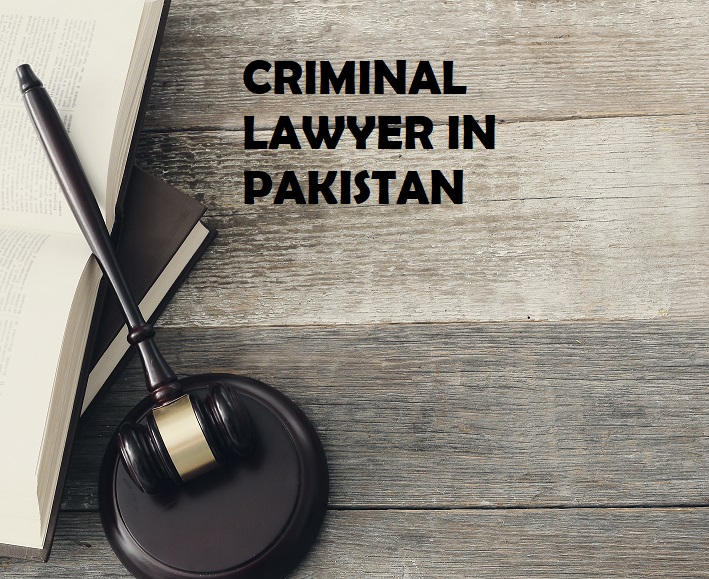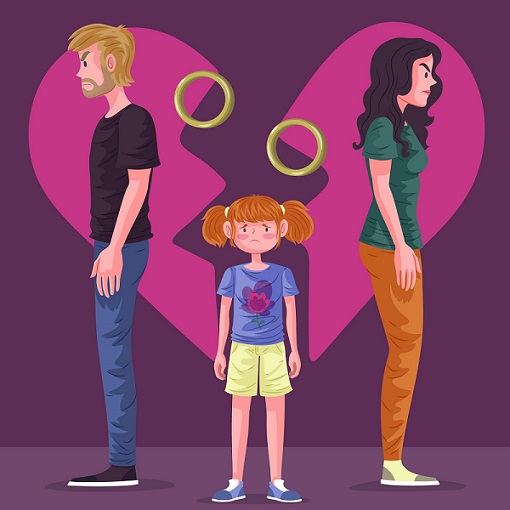Laws regarding children, also known as child laws, vary by jurisdiction but generally cover issues such as child abuse and neglect, child custody and support, adoption, and juvenile justice. These laws are designed to protect children’s welfare and rights and ensure that their needs are met.
Definition of Child by UNICEF:
A child is any person under the age of 18.
Child Labor Laws:
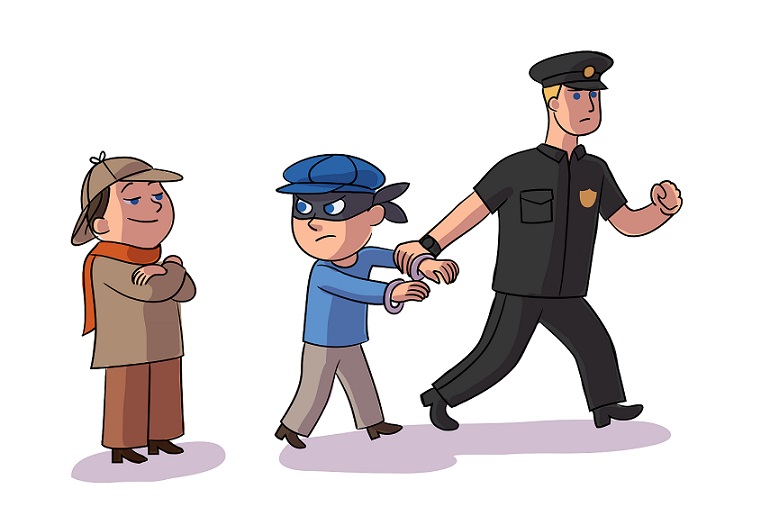
Child labor laws are laws that regulate the employment of children, typically those under the age of 18. The main goal of these laws is to protect children from being employed at an age that is too young or in conditions that are harmful to their health and development.
Fair Labor Standards Act (FLSA):
In the United States, the Fair Labor Standards Act (FLSA) sets the federal child labor standards. It establishes the minimum age for employment, the types of work that are considered hazardous for children, and the number of hours that children can work. The U.S. Department of Labor enforces the FLSA and provides guidance to employers on compliance with the law.
International Labour Organization’s Minimum Age Convention:
The International Labour Organization’s (ILO) Minimum Age Convention (No. 138) is an international treaty that sets the minimum age for admission to employment or work at age 15 (or 14 in developing countries under certain conditions).
It was adopted in 1973 and has been ratified by more than 160 countries. The Convention requires ratifying countries to take measures to ensure that no child under the age of 15 is admitted to any type of employment or work, which is likely to be hazardous or to interfere with the child’s education, or to be harmful to the child’s health or physical, mental, moral or social development.
It also requires ratifying countries to take necessary measures to ensure that no child under 18 is admitted to any type of work which is likely to be hazardous or to harm the child’s health or development, and to provide for a higher minimum age for such work in appropriate cases.
The ILO’s Minimum Age Convention is the first international instrument to set a global standard for the minimum age for work and it is considered a fundamental instrument in the fight against child labor. It’s also the only one of eight ILO fundamental conventions that have not yet been ratified by the United States.
Worst Forms of Child Labour Convention:
The Worst Forms of Child Labour Convention (No. 182) is an international treaty adopted by the International Labour Organization (ILO) in 1999. It is one of the eight ILO’s fundamental conventions and it’s considered a key instrument in the fight against child labor.
Must Read Women’s Rights in Islam
The Convention calls for the immediate elimination of the worst forms of child labor, which includes forms of slavery or practices similar to slavery, such as the sale or trafficking of children, debt bondage and serfdom, forced or compulsory labor, including forced or compulsory recruitment of children for use in armed conflict, use of a child for prostitution, pornography, or production of illicit drugs and other forms of hazardous work that is likely to harm the health, safety or morals of children.
The Convention requires ratifying countries to take immediate and effective measures to secure the prohibition and elimination of the worst forms of child labor as a matter of urgency and to provide for the rehabilitation and social integration of children removed from such work.
It also calls on countries to take measures to prevent the engagement of children in the worst forms of child labor to provide access to free basic education and to take measures to ensure the prohibition and elimination of the worst forms of child labor are included in the national programs.
Child Trafficking:
Child trafficking is a serious criminal offense that is prohibited by laws in many countries. The United Nations Protocol to Prevent, Suppress and Punish Trafficking in Persons. Especially Women and Children, which supplements the UN Convention against Transnational Organized Crime, defines child trafficking as the recruitment, transportation, transfer, harboring, or receipt of a child for the purpose of exploitation. Penalties for child trafficking can include imprisonment, fines, and other legal sanctions. Additionally, many countries have specialized laws and agencies to investigate and prosecute cases of child trafficking, and to provide support and assistance to victims of trafficking.
Child Abuse Laws:
Child abuse laws are in place in many countries to protect children from harm and to hold those who harm children accountable for their actions. The specific laws and definitions of child abuse can vary from country to country, but generally, child abuse is defined as any action or inaction that causes harm to a child’s physical, emotional, or psychological well-being.
Types of child abuse that may be covered under the law include physical abuse, sexual abuse, emotional abuse, neglect, and exploitation.
Penalties for child abuse can include imprisonment, fines, and other legal sanctions, as well as mandatory reporting requirements for certain professions such as healthcare workers, teachers, and social workers.
Additionally, many countries have specialized agencies and programs in place to investigate and prosecute cases of child abuse, and to provide support and assistance to victims of child abuse.
There are several international laws and conventions that address child abuse, including:
- The United Nations Convention on the Rights of the Child (UNCRC), establishes the rights of children to be protected from all forms of physical or mental violence, injury, or abuse, neglect or negligent treatment, maltreatment, or exploitation, including sexual abuse.
- The Optional Protocol to the Convention on the Rights of the Child on the sale of children, child prostitution, and child pornography, prohibits these practices and requires states to take measures to prevent them.
- The Council of Europe Convention on the Protection of Children against Sexual Exploitation and Sexual Abuse requires states to criminalize sexual offenses against children, including sexual abuse and exploitation, and to take measures to protect children from such abuse and exploitation.
- The Hague Convention on the Civil Aspects of International Child Abduction provides for the return of a child who has been wrongfully removed or retained by a parent or other person.
These international laws and conventions set standards and guidelines for countries to follow to protect children from abuse and exploitation. However, the implementation and enforcement of these laws and conventions vary from country to country.
Related Article: Fundamental Rights of citizen
Child Poverty laws:
There are no specific laws that exist to address child poverty, as poverty is a complex issue that is influenced by a variety of factors, such as economic policies, social welfare programs, and educational opportunities.
However, there are several international laws and conventions that address the rights of children to an adequate standard of living and access to education, healthcare, and other basic necessities. These include:
The United Nations Convention on the Rights of the Child (UNCRC), establishes the right of children to an adequate standard of living, including the right to food, clothing, housing, and medical care.
The International Covenant on Economic, Social, and Cultural Rights, guarantees the right of everyone to an adequate standard of living, including the right to food, housing, and medical care.
The Sustainable Development Goals, set by the United Nations in 2015, aim to end poverty, protect the planet, and ensure that all people enjoy peace and prosperity, with a specific target of ending extreme poverty for all people everywhere by 2030.
These international laws and conventions set standards and guidelines for countries to follow to protect the rights of children and to reduce poverty, but the implementation and enforcement of these laws and conventions vary from country to country.
Children’s Online Privacy Protection Act (COPPA)1998:
The Children’s Online Privacy Protection Act (COPPA) is a federal law in the United States that regulates the collection of personal information from children under the age of 13.
The law, enacted in 1998, applies to websites and online services directed at children, as well as to general audience websites and services that have actual knowledge that they are collecting personal information from children.
Also Read: Women’s Harassment Laws
The main goal of COPPA is to give parents control over what information is collected from their children online. The law requires that website operators obtain verifiable parental consent before collecting, using, or disclosing personal information from children and that they provide parents with notice of their information practices.
Website operators must also provide parents with the opportunity to review the personal information that has been collected, and to request that it be deleted.
COPPA also requires website operators to take reasonable steps to protect the confidentiality, security, and integrity of personal information that they collect from children.
This includes implementing appropriate procedures to protect against unauthorized access to or use of personal information and to promptly delete or destroy personal information that is no longer needed.
Overall, COPPA is a federal law in the United States that aims to give parents control over what information is collected from their children online and to ensure that children are protected from having their personal information collected without their parent’s permission.
Committee on the Rights of the Child (CRC):
The Committee on the Rights of the Child (CRC) is a body of independent experts that monitors the implementation of the United Nations Convention on the Rights of the Child (UNCRC) by its State parties.
The Committee is made up of 18 members who are experts in the field of children’s rights. They are elected by the States Parties to the Convention and serve in their personal capacity.
- The Committee’s main responsibilities include: Examining and assessing the periodic reports submitted by State Parties on the measures they have taken to implement the Convention and its Optional Protocols.
- Reviewing individual complaints or communications regarding alleged violations of the rights protected under the Convention and its Optional Protocols by State Parties.
- Offering general recommendations to State Parties to help them improve the protection and promotion of children’s rights.
- Engaging in dialogue and cooperation with other UN bodies, regional organizations, and civil society groups to promote the rights of the child.
- The Committee also provides technical assistance and support to State Parties to help them implement the Convention and its Optional Protocols.
It is important to note that the Committee is not a court of law, it doesn’t have the power to impose sanctions or penalties, but it has the power to make recommendations to the State parties on how to improve the situation of children’s rights.
World Day Against Child Labour:
The World Day Against Child Labour is an international observance that is held annually on June 12th to raise awareness about the plight of child laborers around the world and to mobilize action to eliminate child labor.
The event is organized by the International Labour Organization (ILO), a United Nations agency that is dedicated to promoting social justice and decent working conditions.
The World Day Against Child Labour is a key opportunity for governments, employers, workers, civil society organizations, and the general public to demonstrate their commitment to the elimination of child labor and to take action to help children who are trapped in this form of exploitation.
On this day, activities such as seminars, workshops, and educational campaigns are organized to raise awareness about the negative impact of child labor on children’s health, education, and overall development.
Governments, civil society organizations, and other stakeholders also use the day to advocate for stronger laws, policies, and programs to protect children from child labor and to provide them with access to education, healthcare, and other basic necessities.
In addition, the ILO also releases an annual report on the global situation of child labor, which provides information on the number of children affected by child labor, the sectors in which they work, and the progress that has been made in eliminating child labor.
The World Day Against Child Labour is an important reminder that child labor is a persistent and widespread problem and that much more needs to be done to end it.

